Bullying
All children living, working, being educated or socialising in Brighton & Hove have the right to go about their lives without the fear of being threatened, assaulted or harassed.
The BHSCP works with partner agencies to ensure the provision of safe environments for children, and to address bullying behaviour effectively so that the incidence of all forms of bullying is minimised.
Any child can be bullied, but bullying often occurs if a child has been identified in some ways as vulnerable, different or inclined to spend more time on their own. Bullying may be fuelled by prejudice (racial, religious, and homophobic) and against children with special educational needs or disabilities or those who are perceived as different in some way. In cases of sexist, sexual and transphobic bullying, schools must always consider whether safeguarding processes need to be followed. This is because of the potential for violence (including sexual violence) that can characterise these forms of bullying. Children living away from home are also particularly vulnerable to bullying and abuse by their peers.
Bullying is behaviour by a person or group, often repeated over time, which intentionally hurts others. This can be either physically or emotionally. Bulling can take many forms and can take place in person or online. A child may encounter bullying attacks that are:
- Physical: pushing, kicking, hitting, pinching, and other forms of violence or threats
- Verbal: name-calling, sarcasm, spreading rumours, persistent teasing
- Non-verbal: hand signs, text messages, online abuse
- Emotional: excluding, tormenting, ridiculing, humiliating.
Cyberbullying
Cyberbullying, or online bullying, is bullying that takes place online, including via social media networks or apps like Snapchat, Instagram, Facebook, online games, and through messaging apps, such as Whatsapp or Facebook messenger.
Cyberbullying can include:
- Sending threatening or abusive text messages
- Creating and sharing embarrassing images or videos
- Trolling – the sending of menacing or upsetting messages on social networks, chat rooms or online games
- Excluding children from online games, activities or friendship groups
- Shaming someone online
- Setting up hate sites or groups about a particular child
- Encouraging young people to self-harm
- Voting for or against someone in an abusive poll
- Creating fake accounts, hijacking or stealing online identities to embarrass a young person or cause trouble using their name
- Sending explicit messages, also known as sexting
- Pressuring children into sending sexual images or engaging in sexual conversations.
The Child Victim
The damage caused by bullying is often underestimated. Bullying can cause considerable distress to children and young people, and can affect their health and development or, at the extreme, can cause anxiety, depression, and self-harm. Children could be prevented from telling anyone about their experience by threats, feeling that nothing can change their situation, that they may be partly to blame or that they should be able to deal with it themselves.
Young people should be provided with information as to what they can do if they or someone they know is bullied, where to get advice and support including staying safe online. This information should be proactively shared and widely available and not just targeted at those who are known to experience bullying.
The Child Engaging in Bullying Behaviour
Children who bully have often been bullied themselves and suffered considerable disruption in their own lives and are likely to have significant needs.
The bullying behaviour may occur because:
- It feels like fun
- They dislike or are jealous of someone
- They feel powerful and respected, and/or
- It gets them what they want
If You are a Parent or Carer
You should take action if you suspect or discover your own child or a child you know is being bullied, or if you are concerned that your own child is bullying others.
Find out how to spot the signs of bullying here.
- Talk to the parents/carers of children who are being bullied or might be bullying others.
- Talk to teachers/the school.
- If it’s serious, you should talk to Children’s Social Care (see Reporting Concerns).
- Read Brighton & Hove City Council’s leaflet for parents here, which includes advice for talking to the school about the problem as well as ways to support your child.
- Read NSPCC’s advice on bullying and cyberbullying.
- Check out online advice such as The Anti Bullying Network or Bullying UK.
If you are concerned about a child, please contact Front Door For Families on 01273 290400, FrontDoorForFamilies@brighton-hove.gov.uk, or use their Online Referral Form.
If a child is in immediate danger, you should contact the police by calling 999.
If You are a Practitioner
All settings in which children are provided with services, including where they are living away from home, should have in place anti-bullying strategies and procedures on how to refer to Children’s Social Care if safeguarding concerns are identified. This includes youth clubs and all other children’s organisations as well as all schools where anti-bullying strategies should be rigorously enforced.
In order to maintain an effective strategy for dealing with bullying, the traditional ideas about bullying should be challenged, for example:
- It’s only a bit of harmless fun
- It’s all part of growing up
- Children just have to put up with it
- Adults getting involved make it worse
Clear messages must be given that bullying is not acceptable and children must be reassured that significant adults involved in their lives are dealing with bullying seriously. Some acts of bullying could be a criminal offence.
Creating an anti-bullying climate that is conducive to equality of opportunity, co-operation and mutual respect for differences can be achieved for example by:
- Low Tolerance of Minor Bullying – dealing with incidents at the earliest sign
- Never ignoring victims of bullying, always showing an interest/concern
- Acknowledging the bullied child’s distress
- Organising quality groups/circles, which allow children to work together to identify their own problems, causes and solutions with sensitive facilitators
Practitioners may often be in the position of having to deal with the perpetrators as well as the victims of bullying. It should be kept in mind that bullying behaviour may in itself be indicative of previous abuse or exposure to violence. It is important when addressing bullying behaviour by another child to avoid accusations, threats or any responses that will only lead to the child being uncooperative, and silent. The focus should be on the bullying behaviour rather than the child and where possible the reasons for the behaviour should be explored and dealt with. A clear explanation of the extent of the upset the bullying has caused should be given and encouragement to see the bullied child’s points of view.
A restorative approach and the use of restorative enquiry and subsequent mediation between those involved can provide an opportunity to meet the needs of all concerned. The child who has been bullied has the chance to say how they have been affected. The opportunity is provided for the child doing the bullying to understand the impact of their actions and to make amends. Both the child engaged in bullying behaviour and those who are the target of bullying should then be closely monitored. The times, places and circumstances in which the risk of bullying is greatest should be ascertained and action taken to reduce the risk of recurrence.
Whatever plan of action is implemented, it must be reviewed at regular intervals to ascertain whether actions have been successful. This review should look at whether the target of bullying now feels safe and whether the bullying behaviour has now ceased. Consideration should also be given to lessons learned in order to constantly review and improve practice. Consideration should always be given to the existence of any underlying issues in relation to race, gender and sexual orientation. This should be addressed and challenged accordingly.

 If a child is in immediate danger,
If a child is in immediate danger,